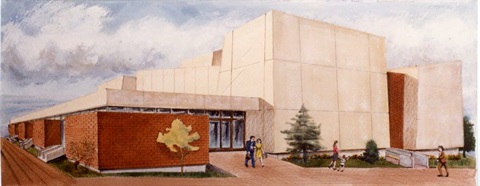History

The Civic Centre
The first indications of dissatisfaction with the limitations of the old Burnie Theatre and Town Hall located on Cattley Street became evident in the 1940s as the region recovered from the economic downturn of the Second World War. Various options were considered culminating in a vision for a new Civic Centre within an identified Public Purposes Zone of the Burnie CBD.
Work began at the Wilmot Street site in 1973. The new Burnie Civic Centre was completed in 1976 for a total cost of approximately $3.5 million. At that time the Civic Centre had the only fully comprehensive and flexible entertainment and cultural facilities in Tasmania. It was intended that the centre should provide high quality performing arts and function venues for the community of Burnie and the north west region of Tasmania.
The Gallery
In September 1973, following discussions with the Warden and Treasurer of the Burnie Municipal Council (now called Burnie City Council), a proposal was submitted to include a modern art gallery in the new Civic Centre complex. The Council agreed that if funds were forthcoming, an unallotted area would be made available. A separate Regional Art Gallery was established with grants from both the Federal and Tasmanian State Governments in the converted basement car park of the Civic Centre. Mr Stephen Rainbird was appointed Director in June 1978, and the Gallery was officially opened in August of the same year by the Hon. Harry Holgate, Minister for Education, Recreation and the Arts. It remains one of the largest regional galleries (by floor area) in Australia.
The Museum
Established by historian Peter Mercer, and originally known as the Pioneer Village Museum, Burnie’s Regional Museum has origins dating back to the 1950s and occupies a separate ‘tin shed’ style building in the cultural precinct. The museum houses the Federation Street display and one of the largest diverse museological collections in Tasmania. Now unique in Australia, Federation Street was the first indoor historic streetscape created in this country.